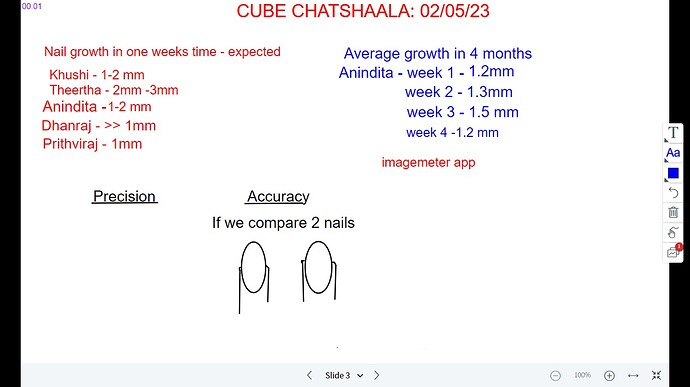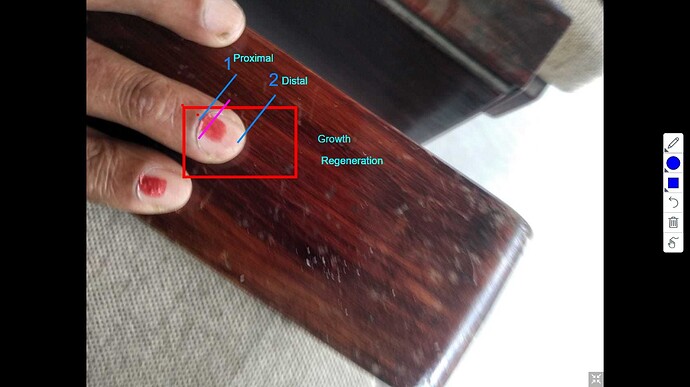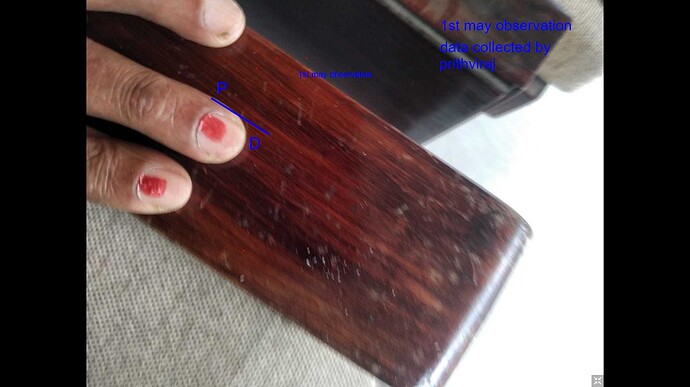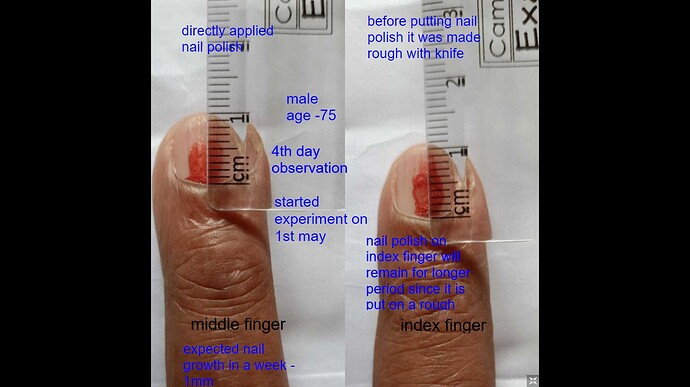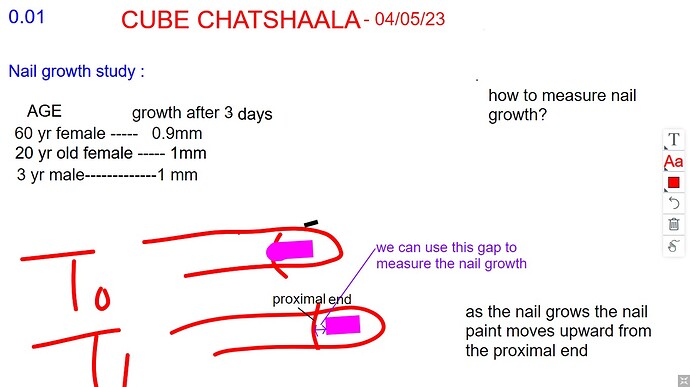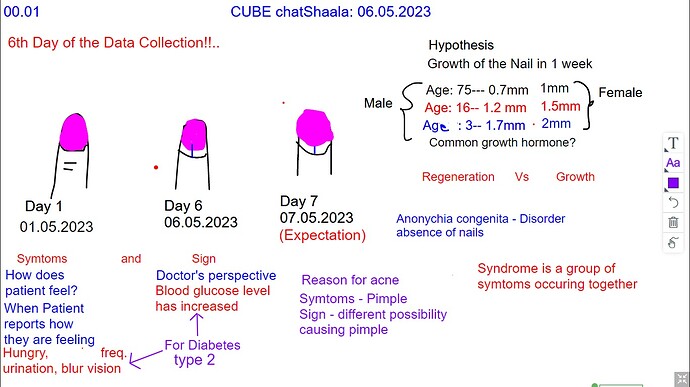2) Requirements
3) Procedure
4) Expectations
5) Observation - way of collecting data (i would prefer uploading data on metastudio so it would be easy to maintain it and find it anytime needed)
6) Result & Conclusion
Take this image and reference given below as a hint to design your experiment!
Nail anatomy
[Figure, Nail anatomy, Lateral nail fold,...] - StatPearls - NCBI Bookshelf
![]() Then we discussed about what error we might get and how can we get precise and accurate data
Then we discussed about what error we might get and how can we get precise and accurate data
Precision and accuracy are two ways that scientists think about error. Accuracy refers to how close a measurement is to the true or accepted value. Precision refers to how close measurements of the same item are to each other. Precision is independent of accuracy. That means it is possible to be very precise but not very accurate, and it is also possible to be accurate without being precise. The best quality scientific observations are both accurate and precise.
https://manoa.hawaii.edu/exploringourfluidearth/physical/world-ocean/map-distortion/practices-science-precision-vs-accuracy#:~:text=Accuracy%20refers%20to%20how%20close,Precision%20is%20independent%20of%20accuracy.
![]() Here @anindita8820 explained that we can take observation for like 4 week and if we observe growth between 2 numbers let’s say between 1-2mm we can precisely say that this is the standard range and to actually standardize it we can perform same experiment with various people and see if we get results in same range
Here @anindita8820 explained that we can take observation for like 4 week and if we observe growth between 2 numbers let’s say between 1-2mm we can precisely say that this is the standard range and to actually standardize it we can perform same experiment with various people and see if we get results in same range
![]() On 4th May we continued discussion about Prithviraj sir’s work on nail on nail growth
On 4th May we continued discussion about Prithviraj sir’s work on nail on nail growth
![]() This picture was taken after applying nail paint on 1st may by Prithviraj sir
This picture was taken after applying nail paint on 1st may by Prithviraj sir
![]() Here we can see nail paint has been applied on index finger (one which is towards the bottom side) and middle finger
Here we can see nail paint has been applied on index finger (one which is towards the bottom side) and middle finger
![]() These are same nails after 4 days of applying nail paint
These are same nails after 4 days of applying nail paint
![]() Here we can see he has applied nail paint on index finger and middle finger and index finger is made rough with knife before applying nail paint so that it will stay on nail for longer period of time as some nail paints peels off easily after drying
Here we can see he has applied nail paint on index finger and middle finger and index finger is made rough with knife before applying nail paint so that it will stay on nail for longer period of time as some nail paints peels off easily after drying
![]() This picture has been taken after 4 days of applying nail paint, do you observe any nail growth yet
This picture has been taken after 4 days of applying nail paint, do you observe any nail growth yet ![]() Cause i can’t see any growth here
Cause i can’t see any growth here
males? Can we find it out
-
Estrogen therapy has a beneficial effect upon collagen, thus improving the texture of the skin, the nails, the intervertebral discs and bone matrix. Discussion of side-effects should not be avoided, particularly the 1% extra lifetime risk of breast cancer.
Ten reasons to be happy about hormone replacement therapy: a guide for patients - PubMed. -
RSPO4 is the major gene in autosomal-recessive anonychia and mutations cluster in the furin-like cysteine-rich domains of the Wnt signaling ligand R-spondin 4. Congenital anonychia is a rare autosomal-recessive disorder characterized by the absence of finger- and toenails. Recently, we and others identified the secreted Wnt signaling ligand R-spondin 4 (RSPO4) as the first gene known to be responsible for inherited anonychia. R-spondins are secreted proteins that activate the Wnt/β-catenin signaling pathway. This puts anonychia on the growing list of congenital malformation syndromes caused by Wnt signaling pathway defects.
https://scholar.google.com/scholar?hl=en&as_sdt=0%2C5&q=mutation+that+causes+Anonychia+congenita&btnG=#d=gs_qabs&t=1683386414088&u=%23p%3D8CgliFBYa1AJ -
Congenital anonychia has been described in association with a wide variety of other congenital anomalies like nail-patella syndrome, DOOR syndrome (deafness, onychodystrophy, osteodystrophy and mental retardation), AEC syndrome (ankyloblepharon, ectodermal defects, cleft lip/palate), EEC syndrome (ectodactyly, ectodermal dysplasia, cleft lip/palate), TOOD syndrome (tricho-odonto-onycho-dermal), hypohidrotic ectodermal dysplasia with multiple anomalies and various craniofacial malformation syndromes 2. As an underlying bone is a prerequisite for the development of a normal nail, anonychia or hyponychia may occur when the terminal phalynx is either hypoplastic or completely absent 10. Simple anonychia, meaning the congenital absence of the nails without any other coexisting major congenital anomaly, is an extremely rare variety of this condition. This is mostly due to autosomal recessive inheritance. Isolated anonychia without any associated phenotypical disturbances is one of the rarest anomalies of congenital nail disorders. Some or all fingers of the hands or feet could be affected. Anonychia can also be encountered in dermatologic disorders like pemphigus, lichen planus, icthyosis, severe infection, severe allergic contact dermatitis, self-inflicted trauma, Raynaud phenomenon, severe exfoliative diseases, epidermolysis bullosa, and as a sequel of Stevens-Johnson syndrome
Anonychia, anonychia congenita, causes, symptoms, diagnosis & treatment -
A syndrome is a constellation of signs and symptoms that occur together and covary over time. A disorder is also a collection of signs and symptoms, but it has known associated features that are presumed to be related.
https://www.google.com/url?sa=t&source=web&rct=j&url=https://onlinelibrary.wiley.com/doi/abs/10.1002/9781118625392.wbecp154%23:~:text%3DA%2520syndrome%2520is%2520a%2520constellation,are%2520presumed%2520to%2520be%2520related.&ved=2ahUKEwjo-uPpieH-AhUIsFYBHXYVB3kQFnoECBQQBQ&usg=AOvVaw166dXngTFExojNl4QdRCB_ -
Anonychia congenita is a condition that affects the fingernails and toenails. Individuals with this condition are typically missing all of their fingernails and toenails (anonychia). This absence of nails is noticeable from birth (congenital). Anonychia congenita: MedlinePlus Genetics.
-
https://www.sciencedirect.com/topics/medicine-and-dentistry/anonychia
-
Anonychia refers to the absence of nail plates owing to an autosomal dominant or recessive inheritance. Congenital anonychia is a rare condition that may be associated with other ectodermal or mesodermal malformations like epidermolysis bullosa, (deafness, onychodystrophy, osteodystrophy, and mental retardation) syndrome and Iso-Kikuchi syndrome. Here, we report 3 cases with anonychia congenita appearing in different generations of a single family in Kingdom of Saudi Arabia Anonychia congenita in different generations of a single Saudi family - PMC
-
https://www.cancer.gov/publications/dictionaries/cancer-terms/def/syndrome
